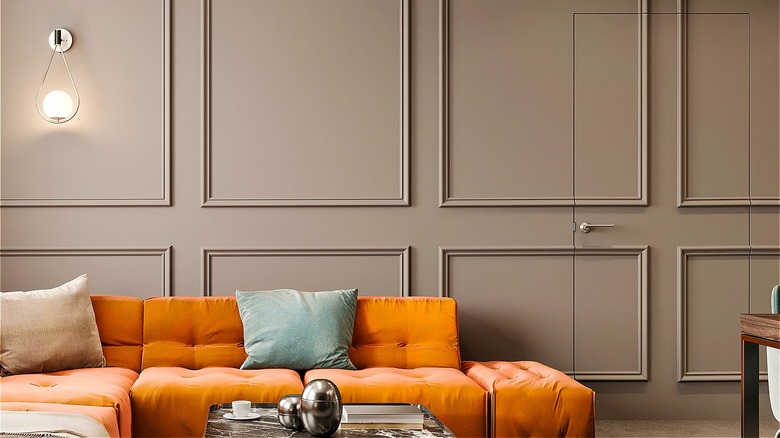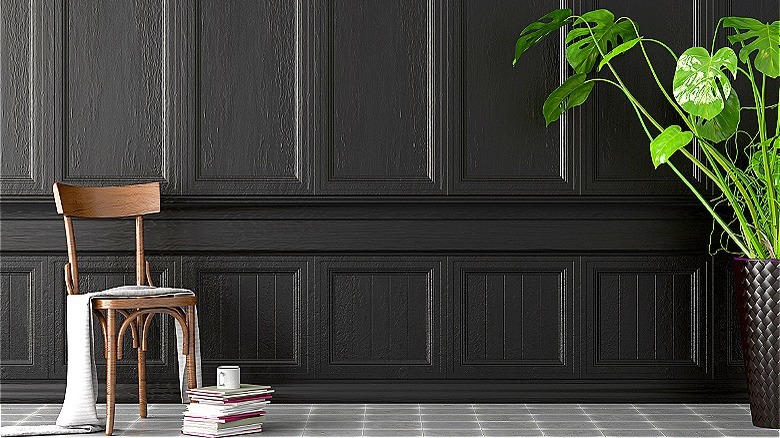HGTV's Jenn Todryk Shares Her Tips To Easily Decorate A Wall With 3D Paneling
Wall paneling adds dimension to any room, and while this type of cladding is decorative on its own, some homeowners may still want to add art pieces to their 3D walls. However, the three-dimensional features of a 3D wall can make this a bit difficult. Luckily, Jenn Todryk from HGTV's "No Demo Reno" has shared two ways in which to tackle this design challenge: working within the paneling lines and working over them.
Said Todryk on Instagram with regard to the first method, "I used this big gap between these two panels in my favor. I bought picture frames that fit into the space I was given. I centered the dresser on this gap . . . and we have our frames going up, perfectly measured to the center of this gap." Here, the 3D paneling's lines work as additional framing for the framed photos. The width of the gap between the edges of the frame and the paneling is exactly the same as the vertical space separating the framed photos. Adding the photos in this way creates a balanced feature for the room that feels intentionally done.
However, having to fit your décor in between the gaps of wall paneling can leave you limited. So Todryk suggested a second method: going oversized. "I didn't have a gap this big," she said, referring to another wall's 3D paneling. "This is a big, chunky piece of art . . . but here, I just put it on top of the panels." With this approach, the decorative lines behind the oversized painting help to highlight the piece's size while adding dimension.
Decorating around a wall's three dimensions
Three-dimensional wall design can be tricky to design around; however, as Jenn Todryk demonstrated, framed photos and even large pieces of art can still work with such elements. In the case of Todryk's second approach — placing oversized art over a 3D wall — there doesn't seem to be a wrong way to go. Although, you still want to work with the lines that will be coming out from behind the frame.
For her first method, though, this will take more consideration when decorating, as you'll be working within the lines of the 3D paneling. But as Todryk explained, if the sizing is right, you can use that space to your design advantage. To follow her lead here, first, take a look at the kind of 3D wall paneling you have or want to install. Picture-frame molding and board and batten, for example, create squares or rectangles on the wall and are often best used in dining and living rooms. These squares/rectangles are the perfect way to complement framed art.
Picture-frame molding tends to be a little larger, so with it, you're able to show off bigger pieces, while board and batten is symmetrical, so featuring a collection of small items in each square can work well. You can even paint the raised parts a different color than the base of the wall to create a framing effect that will draw the eye to them. However, when working inside of these geometric shapes, remember Todryk's advice, and carefully measure your gaps out so you can choose the right artwork size for your space.

